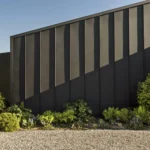When it comes to automobile maintenance, windshield replacement often doesn’t receive the same attention as engine care or tire changes. Yet, this transparent barrier between you and the road ahead serves critical functions beyond simply keeping the wind out of your face. Your windshield is a fundamental safety component of your vehicle, and timely replacement when damaged isn’t just about aesthetics—it’s about protecting yourself and your passengers.
5 Reasons Why Timely Windshield Replacement Is Important
1. Structural Integrity of Your Vehicle
Your automobile windshield replacement isn’t merely glass—it’s a structural component that contributes significantly to your vehicle’s overall integrity. When cracked or damaged, this structural integrity is compromised, potentially placing you at greater risk during an accident.
Damaged windshield glass weakens your car’s ability to withstand impact forces, potentially leading to more severe damage and injuries during collisions. Automobile windshield replacement restores this crucial structural support, ensuring your vehicle functions as designed in accident scenarios.
2. Clear Vision and Driving Safety
Even minor chips or cracks in your windshield can distort your vision, particularly when light hits the damaged area. This visual impairment becomes especially dangerous at night, in rainy conditions, or when facing oncoming headlights.
Timely windshield glass repair or replacement eliminates these dangerous visual distractions and ensures you have clear, unobstructed visibility of the road ahead—a fundamental requirement for safe driving. Proper visibility is essential for avoiding obstacles, reading traffic signs, and reacting appropriately to other drivers.
3. Proper Airbag Deployment
Few drivers realize that windshield integrity directly affects airbag functionality. In many vehicles, front passenger airbags are designed to deploy upward against the windshield before expanding toward the passenger. A weakened windshield may shatter during airbag deployment, reducing the airbag’s effectiveness and potentially allowing it to inflate outside the vehicle instead of protecting the passenger.
Windshield replacement ensures this critical safety system works as intended during accidents, potentially making the difference between minor injuries and severe trauma.
4. Prevention of Further Damage
What begins as a small chip can quickly expand into a major crack, especially when exposed to temperature changes, rough roads, or even normal driving vibrations. The automobile windshield replacement experiences constant stress from temperature fluctuations, pressure changes, and road conditions.
Addressing damage promptly through windshield glass repair when possible, or complete replacement when necessary, prevents minor issues from becoming major problems. This proactive approach often saves money compared to waiting until a complete replacement becomes inevitable.
5. Legal Compliance and Insurance Considerations
Many jurisdictions have specific laws regarding windshield condition, and driving with a severely damaged windshield can result in citations or even vehicle impoundment. Additionally, some insurance policies may provide coverage for windshield replacement at reduced or no deductible.
Maintaining a properly functioning windshield ensures you remain compliant with local regulations while potentially benefiting from insurance coverage designed specifically for this common vehicle repair need.
When Repair Isn’t Enough?
While minor chips can often be repaired, certain conditions necessitate complete replacement:
– Cracks longer than a dollar bill
– Damage to the inner layer of laminated glass
Professional technicians can assess whether windshield glass repair is sufficient or if automobile windshield replacement is necessary for your specific situation.
The Replacement Process
Modern windshield replacement techniques have evolved significantly. Today’s professionals use specialized tools and high-quality materials to ensure proper installation. The process typically includes:
1. Careful removal of the damaged windshield
2. Thorough cleaning of the frame area
3. Application of appropriate bonding materials
4. Precision placement of the new windshield
5. Curing time to ensure proper adhesion
Quality installation is crucial—improper replacement can lead to water leaks, wind noise, and compromised structural integrity.
Conclusion
Your automobile’s windshield serves critical safety functions beyond simply keeping the elements out. When damaged, timely windshield replacement isn’t just a cosmetic concern but a significant safety consideration. Whether you’re dealing with a small chip or a major crack, consulting with qualified professionals ensures your vehicle maintains its structural integrity and protective capabilities.
Remember, when it comes to windshield glass repair or replacement, time is of the essence. The longer you delay addressing damage, the greater the potential risks to both your safety and your wallet. Prioritize this often-overlooked maintenance need—your safety on the road depends on it.
Related Reads
- The HZRDUS Smoke Red RDX: The Best Project X Golf Shaft for “Everyman”
- BurnPeak vs. Traditional Diets: Why It Works Better
- How Do Our Vein Experts Diagnose Vein Problems?
- How to Style 18K Gold Hoop Earrings for Weekend Teas and Club Gatherings
- Hospitality Sector Adopts AI-Powered PMS Software for Smarter Operations



